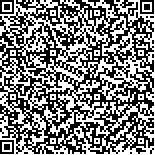下载中心
优秀审稿专家
优秀论文
相关链接
摘要

利用红外掩星获取温压及其大气成分廓线,需要获得精确的指向信息,针对高分五号大气环境甚高分辨率探测仪(GF-5 AIUS)一级光谱信息,本文首先分析了不同切高的光谱变化情况,在此基础上,利用查找表方法进行切高校正。在低切高段(10—20 km),选取N2吸收波段,模拟6—40 km高度上的透过率光谱,通过查找表校正方法对一级数据中的低层切高进行校正。在高切高段(20—100 km),模拟6—90 km切高上的透过率光谱,利用O3吸收波段(20—90 km)进行校正。校正算法采取全局最小均方根误差的方法进行统计实验,确定最小校正半径为15 km。最后选取O3、HCl、N2O共3种大气成分的反演波段,进行校正后的透过率数据对比验证与反演产品精度的验证。结果表明:在O3、HCl、N2O共3种成分的反演通道上,校正后的观测透过率与模拟的透过率数据一致性较好,两者最大偏差小于0.1,切高校正算法得到的结果与模拟透过率吻合度较好;同时基于Aura MLS(Microwave Limb Sounder)、ACE-FTS(Atmospheric Chemistry Experiment Fourier-Transform Spectrometer)Level 2产品进行了O3、HCl、N2O单廓线交叉验证。结果表明:GF-5 AIUS反演的单廓线O3与MLS、ACE-FTS相对偏差在30 km以下小于50%,在30—60 km小于20%;单廓线HCl与MLS、ACE-FTS相对偏差整体小于20%;单廓线N2O与MLS、ACE-FTS相对偏差30 km以下小于20%,30—60 km相对偏差较大。
To obtain the temperature, pressure and trace gas profiles by infrared occultation sounding needs accurate pointing information. For the first-level spectral data of Atmospheric Infrared Ultraspectral Sounder aboard on satellite GF-5 (GF-5 AIUS), the spectral changes at different tangent heights at the full effective bands are analyzed in this paper. Then, a method for tangent height correction using look-up tables is used based on empirical statistics. Look-up tables are established using forward radiative transfer model, namely, Atmospheric Radiative Transfer Simulator (ARTS) with the atmospheric background profiles built using MLS and ACE-FTS Level 2 products for the last five years. The atmospheric transmittance background profiles represent the atmospheric state from 0 km to 120 km in the vertical direction with a grid width of 1 km. In the lower tangent height section (10—20 km), the N2 absorption band (2490—2520 cm-1) is selected to simulate the transmittance spectrum, and the low-level tangent height in the Level 1 data is corrected by a look-up table correction method. In the higher tangent height section (20—90 km), the transmittance spectrum is also simulated, and the O3 absorption band (1020—1150 cm-1) is used for correction. The correction algorithm adopts the method of global minimum root mean square error for statistical experiments and determines the minimum correction radius of 15 km. Finally, the inversion bands of the three atmospheric components of O3, HCl, and N2O are selected, and corrected transmittance data are compared with simulated transmittance, and verification of inversion product accuracy are performed. Results show that on the inversion channels of O3, HCl, and N2O, the corrected observed transmittance and simulated transmittance data are in good agreement, and the maximum observation deviation is less than 0.1, which shows that the tangent height correction algorithm can obtain a good effect. Meanwhile, based on Aura MLS and ACE-FTS Level 2 product, the cross-validation of O3, HCl, and N2O single profile is performed. The results show that the single profile value of O3 product is less than that of MLS product and higher than that of ACE-FTS product, with absolute deviation of less than 1 ppmv and relative deviation of less than 50% below 20 km and less than 20% above 20 km. The single profile value of HCl retrieved by GF5-AIUS is less than that of MLS and ACE-FTS products, with absolute deviation of less than 0.5 ppbv and relative deviation of less than 50% below 50 km. The single N2O profile value retrieved by GF5-AIUS is less than the ACE-FTS Level 2 product and higher than the MLS Level 2 below 25 km and above 40 km. In addition, the result is opposite in the range of 25—40 km; the absolute deviation between GF5-AIUS and ACE-FTS Level 2 products is less than 10 ppbv in the range of 30—60 km, and the relative deviation is approximately 200%. The absolute deviation is less than 25 ppbv, but the relative deviation is less than 25% below 30 km. Above 30 km, the content of N2O decreases, and the inversion error increases. Therefore, using N2 absorption channel and O3 absorption channel to establish look-up tables for GF-5 AIUS Level 1 data correction can satisfy the requirements of inversion. The disadvantage of this method is that the atmospheric background database requires regular updating to ensure a more accurate atmospheric transmittance look-up table.

